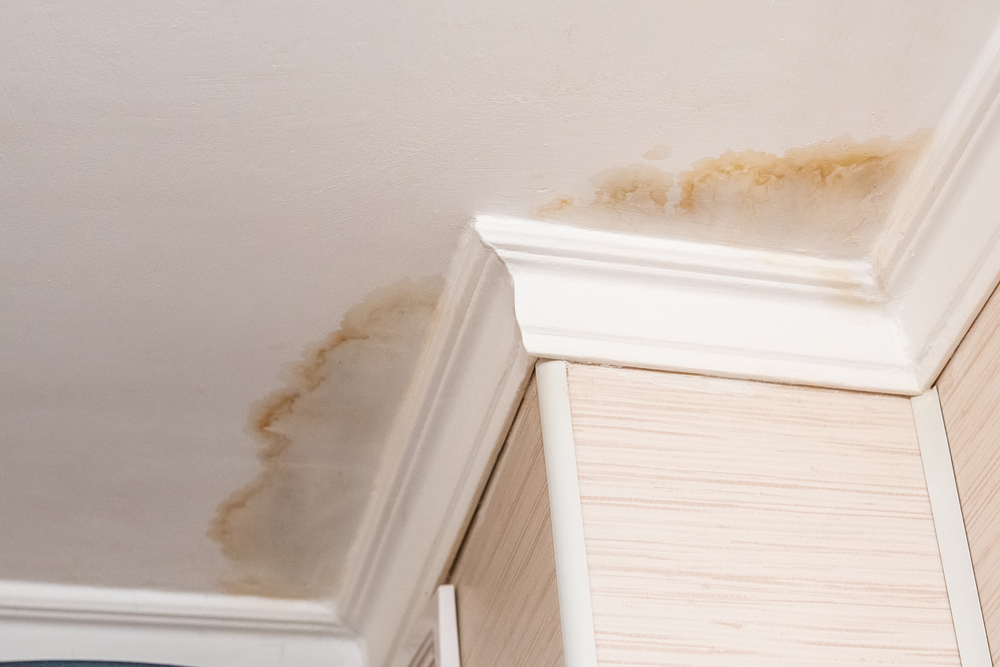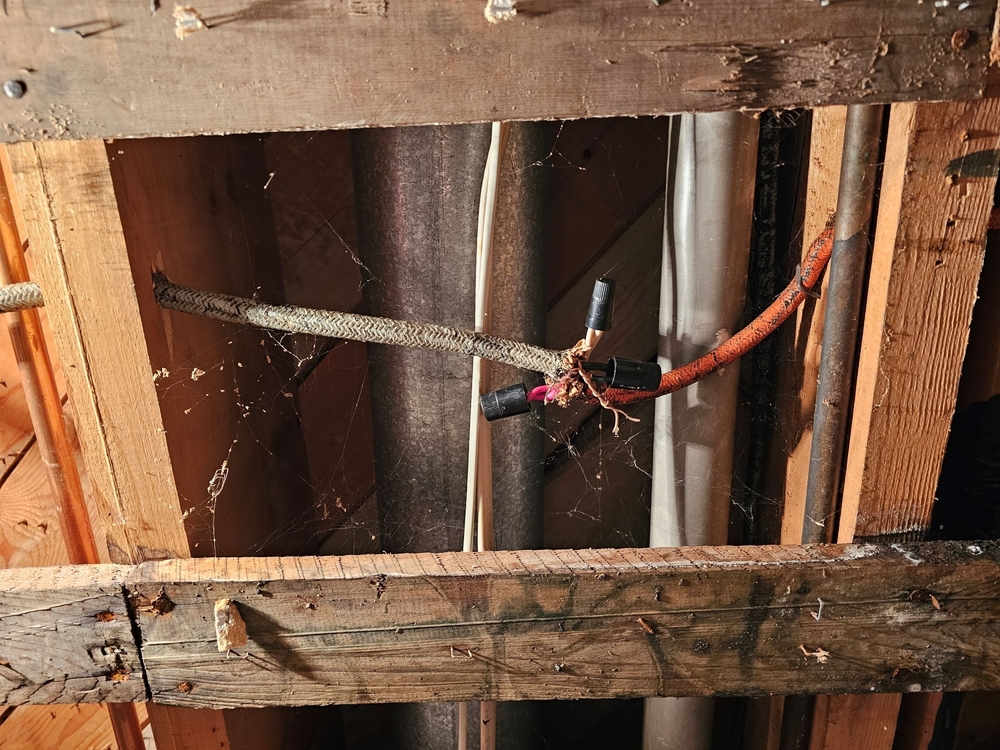Introduction: The Art of House Hunting (and What You’re Probably Overlooking)
House hunting is a rollercoaster of emotions, and trust me, I’ve been there. One minute, you’re picturing yourself sipping coffee on the charming front porch, envisioning slow Sunday mornings, and the next, you’re realizing that “charming” is just real estate speak for strategically angled listing photos hiding a cracked foundation. It’s so easy to get caught up in the dreamy kitchen backsplash, the cozy reading nook, or the freshly painted walls, but I’ve learned the hard way that these surface-level features can distract you from the real red flags—the ones that could cost you thousands (or worse, your sanity) after you move in.
That’s where this guide comes in. After touring countless homes—both for myself and alongside friends—I’ve seen firsthand how easy it is to overlook the important details. I’m going beyond the staged furniture and the irresistible scent of freshly baked cookies (yes, sellers really do that) to uncover the 12 things most buyers completely miss when touring a home—but absolutely shouldn’t. Let’s dive in so you don’t make the same mistakes I’ve seen others (and myself) make.
1. The Smell Test (Because No One Wants a Home That Smells Like a Wet Dog)
Before you even step inside, take a deep breath. No, really—pause for a second and inhale deeply. That first whiff is like a sneak peek into what living in this house will actually feel like. I’ve walked into homes that smelled like fresh-baked cookies, and while that was a nice touch, I’ve also stepped into houses where the scent screamed ‘wet dog meets forgotten gym bag.’ If you get a strong musty odor, that could indicate mold or past water damage. A heavy pet smell? That means you’ll be scrubbing floors and walls for months trying to get rid of it. And if the place smells overwhelmingly like vanilla candles or artificial plug-in scents, be cautious—sometimes, sellers use those to mask something much worse.
Here’s the thing: You can slap a coat of paint over scuffed walls, but no amount of DIY magic will erase deeply embedded odors. I’ve been in homes where the previous owners were smokers, and trust me, that stale cigarette smell lingers no matter how many air fresheners you throw at it. Pet urine is another nightmare—once it seeps into carpet or hardwood, getting rid of the stench is a serious challenge. And if you catch a whiff of mildew? That’s a sign of potential moisture problems, which can lead to expensive fixes down the road. While a pleasant-smelling home doesn’t necessarily mean it’s problem-free, a bad-smelling one is often a giant waving red flag.
So before you start mentally arranging your furniture and picking out paint colors, do yourself a favor—take a minute to sniff around. Open closets, step into the basement, and breathe in deeply. If something smells fishy (and there’s no seafood dinner in sight), it’s time to start asking questions. Trust your nose—it might save you from a costly mistake.
2. Water Stains & Ceiling Spots (A Home’s Way of Crying for Help)
Picture this: You’re walking through a house, and everything seems perfect. The kitchen gleams, the floors shine, and the living room has just the right amount of natural light. Then, out of the corner of your eye, you spot something on the ceiling—a slightly off-colored stain. It’s small, maybe even faint, but don’t let that fool you. That little stain might as well be a neon sign flashing, ‘Hidden Problems Here!’ I’ve learned from experience that what looks minor now can turn into a major headache later.
Water stains are a house’s way of dropping hints—more like whispering, ‘Hey, something’s not right up here.’ Even if they look minor, they can be warning signs of bigger issues, like a leaky roof, burst pipes, or poor drainage. I’ve seen houses where a single, seemingly harmless stain turned out to be evidence of an expensive water damage nightmare. The key is to ask the right questions and, more importantly, trust your instincts.
Some homeowners get crafty—too crafty. A strategically placed bookshelf? A perfectly aligned rug? Fresh paint in just one area? These aren’t always innocent design choices; sometimes, they’re cleverly disguised cover-ups. I once toured a house where a well-placed painting was hiding a gaping hole from a previous leak. If you notice fresh paint in oddly specific areas, ask why. Get the details: When was the roof last replaced? Have there been past plumbing problems? Was the recent touch-up for aesthetics, or was it to mask something serious?
If the seller gets vague, avoids eye contact, or suddenly changes the subject, take that as your cue to investigate further. This is where bringing in a professional inspector can be a game-changer. They can uncover issues that a quick glance might miss. Trust me, the last thing you want is to move in and realize you’ve unintentionally signed up for an episode of ‘Homeowners Gone Wrong.’ Do yourself a favor and dig deeper before making a decision you’ll regret.
3. The Floors: Are They Sloped or Creaking Like a Haunted House?
Walking through a home should feel sturdy and solid—if it feels more like an amusement park funhouse, you might have a serious problem on your hands. I’ve walked into homes where just taking a few steps made me feel like I was on a seesaw, and trust me, that’s not the vibe you want. A slight slope in the floor might not seem like a big deal at first, but it could be a sign of serious foundation issues. And let me tell you, foundation repairs aren’t just expensive—they’re the kind of costly that makes you question every life decision leading up to your home purchase.
Here’s a simple yet effective test I always recommend: bring a marble or a small ball with you. Drop it on the floor and see what happens. If it stays put, great! If it starts rolling like it just heard last call at happy hour, then you might have a problem. I once watched a marble pick up speed so fast it nearly took out a baseboard—needless to say, that house didn’t make the cut.
Besides sloping, pay attention to how the floor feels when you walk on it. A little creaking in an older home is normal, but if every step sounds like a horror movie soundtrack, that’s a red flag. I grew up in old farm houses, and older homes like these, cracking floors are somewhat ubiquitous. And let’s talk about ‘bouncy’ floors—if you feel like you’re walking on a trampoline instead of solid ground, the subflooring might be an issue. In a brand-new home, that’s even more concerning—because if it wasn’t built right from the start, what else might be lurking beneath the surface?
Home sellers are crafty. They know exactly how to position furniture and area rugs to distract you from flaws. That perfectly placed coffee table? Might be covering a sunken spot. That runner rug in the hallway? Could be concealing a warped floorboard. I always tell buyers: take your time, walk the entire house, and trust your instincts. If anything feels weird, uneven, or like it’s actively trying to trip you, don’t ignore it—get it checked out before you sign on the dotted line.
4. The Windows: Are They Just for Show?
Windows do more than just frame a pretty view or let in that perfect morning light for your Instagram-worthy coffee shots. They play a huge role in energy efficiency, ventilation, and even security. Yet, you’d be surprised how many buyers barely give them a second glance—until the first winter rolls around and they realize their dream home is actually a wind tunnel.
Here’s what you need to do: Don’t be shy—get hands-on with those windows. Walk up to a few and open and close them. Do they slide smoothly, or do you need a Hulk-like grip just to budge them? If they stick, rattle, or downright refuse to move, that’s a sign of trouble. Moisture damage, poor installation, or old age could be the culprits. And if you spot condensation between the panes of a double-pane window? That means the seal is broken, and you’ll probably have to replace them—yet another unexpected expense that can add up fast.
Another trick? Hold your hand near the window frame—if you suddenly feel like you’re in a wind tunnel, that’s a bad sign. Drafty windows mean poor insulation, and poor insulation means skyrocketing energy bills. Trust me, you don’t want to find out in mid-January that your dream home doubles as an igloo. Not only will you be shivering under three blankets, but your heating bill will be giving you heart palpitations. If a house has drafty windows, factor in the cost of fixing or replacing them before you commit.
5. The Neighbors: Are They Friendly or Feuding?
You can change almost anything about a home, but you can’t change the people living next door. And trust me, I’ve learned this the hard way. Before you get too emotionally invested in a house, take a lap around the neighborhood. Do you hear dogs barking like they’re auditioning for a role in a horror movie? Is there a rusted-out car half-buried in someone’s lawn, looking like it’s been there since the early 90s? And what about that guy across the street—does he have a ‘friendly neighbor’ vibe or more of a ‘don’t leave your tools outside’ kind of presence? 
Take a look at the homes around you. If every house has multiple security cameras aimed at the street like it’s a high-security compound, you have to ask yourself: Are these people just extra cautious, or has this street seen some things they’d rather not talk about? Either way, that’s information you need before signing on the dotted line. I once toured a neighborhood where every home had motion sensors and ‘Beware of Dog’ signs—but not a single dog in sight. Safe to say, I moved on.
And if you’re seriously considering a home, do yourself a favor—visit at different times of day. That peaceful, tree-lined street at noon might turn into a tailgate party by 6 PM. I once fell in love with a house, only to find out later that my next-door neighbor was a self-proclaimed ‘experimental musician’ whose ‘instruments’ included power tools and buckets. If I had dropped by in the evening, I would have saved myself a lot of earplugs and regret. Moral of the story: scout out the street at rush hour, late at night, and on weekends—your future sanity will thank you.
6. The Electrical Panel: A Time Capsule of DIY Wiring?
Many buyers glance at the electrical panel like it’s some ancient relic from a time before WiFi, best left untouched. I get it—it’s not the most glamorous feature of a house tour. But trust me, ignoring it can lead to some serious regrets (and possibly, an unplanned fireworks show in your living room). Taking a closer look can save you from future headaches, unexpected repair bills, and even potential electrical fires. If you open that panel and it looks like a rat’s nest of wires, has breakers labeled in faded handwriting (or worse—no labels at all), or appears to be straight out of the 1960s, you’re looking at an upgrade in your near future.
Check for signs of DIY electrical work—you know, the kind where someone thought a YouTube tutorial and a roll of electrical tape made them an instant electrician. If you see wires spliced together with tape, circuits labeled with things like ‘maybe fridge?’ or ‘do not touch,’ or anything that makes you wonder if the previous owner was conducting a science experiment, take a step back. A well-maintained panel should be clean, organized, and clearly labeled. If it looks like someone had a ‘weekend project’ gone wrong, do yourself a favor and call in a professional. Bad wiring isn’t just an inconvenience—it’s a safety hazard that can lead to costly repairs or, worse, a house fire.
7. HVAC System: Ice Age in Summer, Sauna in Winter?
Your HVAC system is like the lungs of your home—if it’s struggling, you will be too. And I’ve learned that the hard way. The last thing you want is to move in, only to realize that your ‘cozy winter nights’ will require three layers of blankets and your summers will feel like a tropical rainforest—inside your living room. An old or inefficient HVAC system can mean high utility bills, poor air circulation, and a whole lot of regret if it needs replacing soon after you move in.
So here’s what I always do: check the age of the system. If it’s pushing 15 years or more, you’re likely looking at a replacement in the near future, and that’s not a cheap fix. A full HVAC system replacement can run anywhere from $5,000 to $10,000 or more, depending on the size of the home. That’s not the kind of surprise expense you want right after signing your mortgage.
But age isn’t the only thing to check. Listen carefully when the system turns on—does it make a weird rattling noise? Does it sound like it’s struggling to keep up? These are warning signs that it’s on its last legs. And don’t just take the seller’s word for it when they say it ‘works great.’ Stand near the vents—do they actually blow hot or cold air the way they should? Feel around the house to see if every room is getting the same airflow. If one bedroom feels like the Arctic while another is stifling hot, you could have a ductwork or circulation problem.
Another trick? Look at the air filters. If they’re clogged with dust or look like they haven’t been changed since the house was built, that’s a sign the previous owners weren’t exactly HVAC maintenance enthusiasts. A neglected system is more likely to fail sooner rather than later.
And one final test—ask about energy bills. If the seller hesitates when you request to see past utility bills, that might be a red flag. An inefficient system could be sucking up energy and costing hundreds more per month than a newer, properly maintained unit. That’s money out of your pocket every single month.
Bottom line: If the HVAC system isn’t working efficiently, be prepared to negotiate for a replacement or budget for a major expense down the road. Because nothing ruins the excitement of a new home like sweating through your first summer or freezing through your first winter inside it.
8. Storage Space: Will Your Stuff Actually Fit?
A home might look spacious when it’s staged, but let’s be real—staging is a magic trick designed to make even the tiniest spaces look open and airy. But will it still feel that way once you haul in your furniture, boxes, and the ‘just in case’ items you probably should have donated years ago?
I’ve walked through houses that looked perfect, only to realize the closets were barely big enough for a weekend bag, let alone a full wardrobe. Before you get swept up in a home’s aesthetics, check closet sizes, garage space, attic accessibility, and basement storage. Open every closet door—don’t be shy. If you can fit a single coat and a shoebox inside, that’s a problem.
And let’s talk about garages. Is it actually a two-car garage, or does it just barely fit a compact sedan and a few bikes? If you have outdoor gear, tools, or holiday decorations to store, a tiny garage might leave you scrambling for storage solutions down the road.
A bonus tip: Bring a tape measure. The last thing you want is to fall in love with a house, only to realize your king-sized bed won’t fit up the staircase or that your favorite sectional is suddenly the size of a small whale in the living room. I’ve seen people buy furniture first, only to have to return it when it doesn’t fit through the front door. Save yourself the hassle and measure before you commit.
Storage might not be glamorous, but it’s a crucial part of comfortable living. If the house doesn’t have enough, you’ll either be living in a maze of boxes or spending extra money on a storage unit. Neither option is ideal, so make sure there’s enough space to fit your lifestyle—both now and in the future.
9. Plumbing: The Silent Money Pit
Plumbing issues are sneaky. Unlike an outdated kitchen or an ugly paint color, they don’t always make themselves obvious—until it’s too late. And trust me, nothing says ‘welcome home’ like discovering a pipe burst two days after moving in. That’s why I always tell buyers: test everything.
First, turn on every faucet. Not just a quick flick—let the water run. Watch how fast it comes out. If it’s a sad little trickle instead of a strong flow, low water pressure could mean old, corroded pipes or a plumbing system that’s barely holding itself together.
Next, flush every toilet. If you press the handle and it gurgles, takes forever to refill, or sounds like it’s struggling for dear life, that’s a sign that the plumbing system might be outdated or improperly installed. A slow or weak flush might not seem like a big deal now, but it could lead to expensive repairs later. And let’s be honest, you really don’t want to deal with toilet problems right after moving in.
Now, check under every sink. Open the cabinet doors and shine a flashlight in there. Do you see any water stains, mold, or weird smells? That’s a telltale sign that there’s been a leak before—and possibly one that’s still active. I once toured a house where the sink looked fine at first glance, but when I peeked underneath, there was a DIY patch job that looked like something MacGyver would have done in a hurry. Not exactly confidence-inspiring.
And don’t stop at the sinks. Look around appliances that use water—dishwashers, refrigerators, washing machines. Water damage or signs of past leaks could indicate a history of plumbing problems, and those problems have a way of resurfacing at the worst possible times.
One last tip: if the seller seems hesitant or dodges questions about the plumbing, that’s a red flag. A well-maintained home should have no issue providing details on past repairs or upgrades. If they’re being vague, they might be hiding something. And when it comes to plumbing, surprises are rarely cheap.
Bottom line? A little extra detective work now can save you from a flooded bathroom, unexpected pipe replacements, and thousands of dollars in repairs later. Don’t just assume the plumbing is fine—make sure of it before you commit.
10. Backyard Drainage: Will Your Yard Become a Swamp?
A gorgeous backyard is great—until you realize after the first rainstorm that it turns into a miniature swamp, and suddenly, your dream home comes with waterfront property that you didn’t sign up for. Poor drainage isn’t just an inconvenience; it can cause foundation issues, attract mosquitoes, and turn your backyard into a muddy disaster for months at a time. Trust me, I’ve seen homes where the backyard looked picture-perfect in the listing photos, only to find standing water inches deep during a home tour after a little drizzle.
So, what can you do? First, walk around the yard and pay attention to how the land slopes. Ideally, the ground should slope away from the house, directing water toward proper drainage areas. If it slopes toward the house, you’re looking at potential water pooling near the foundation—never a good sign. If there’s mulch, gravel, or a paved patio, check for signs of erosion. A washed-out patio edge or displaced gravel could indicate water runoff issues.
Also, look for standing water in low spots. Even if there hasn’t been recent rain, areas of overly soggy grass can be a clue that drainage isn’t great. And don’t forget to peek at the gutters and downspouts. Are they directing water away from the foundation, or are they dumping it straight next to the house like a bad joke? If the home has a basement, this is even more important—bad drainage can lead to basement flooding, and fixing that is neither fun nor cheap.
If you’re unsure, ask the seller if they’ve had drainage problems. Pay attention to their reaction—if they get a little too enthusiastic about how ‘perfect’ the drainage is, or if they dodge the question entirely, that might be a clue to dig deeper. A backyard should be a place where you can relax and enjoy—not a place where you’re worried about installing French drains and sump pumps before the next big rain.
11. Commute Time: The Silent Dealbreaker
A house might check all your boxes—until you realize your dream home comes with a nightmare commute. I’ve been there, staring at a listing that promises ‘convenient location,’ only to find out later that ‘convenient’ meant ‘conveniently far from everything I need.’
Before you fall in love with a home, take a test drive—literally. Drive from the house to your workplace (or wherever you frequently go) during rush hour. A 20-minute drive on a lazy Sunday morning could easily turn into an hour-plus crawl on a Monday at 8 AM. And don’t just rely on Google Maps estimates; they don’t always account for real-world frustrations like that one intersection where traffic inexplicably stops for no reason.
If driving isn’t your thing, check out public transportation options. Is there a bus stop or train station nearby? More importantly, is it reliable? You don’t want to move in only to realize your best option for getting to work is a bus that shows up when it feels like it.
And let’s talk about major roads. Is your house tucked away in a charming little neighborhood that’s impossible to exit during rush hour? Are there only two ways in and out, both of which back up at the first sign of traffic? What about construction zones—any future projects that could turn your daily commute into a personal horror story?
Future-you will thank you for doing this research now. Because no matter how perfect a house is, sitting in bumper-to-bumper traffic for hours every day will make you question whether it was worth it. Don’t let your dream home become your commuting nightmare.
12. Future Renovations: Is There Room for Growth?
Think long-term. Right now, the house might be perfect. But what about five years from now? Life changes—families grow, work situations evolve, and suddenly, that ‘cozy’ home starts feeling more like a shoebox. If you ever want to expand, remodel, or customize, you need to know what’s possible before you sign on the dotted line.
First, check zoning laws and HOA (Homeowners Association) rules. Some neighborhoods have strict guidelines that can limit everything from the color of your front door to whether you can add a second story. I’ve seen buyers excitedly plan for future additions, only to discover their HOA practically requires a blood oath before approving so much as a backyard shed.
Also, consider the available space. If you dream of adding a deck, a pool, or an extra room, is there enough land to make it happen? Some properties have setback restrictions, meaning you can’t build too close to the property line. Others might have underground utilities or easements that make expansion impossible.
Don’t forget to look at structural flexibility. Older homes, for example, often have load-bearing walls in inconvenient places, making an open-concept dream nearly impossible without major (and costly) engineering. And if you’re thinking about finishing a basement or attic, check ceiling heights and existing infrastructure—sometimes what looks like an easy project turns into a budget-draining mess.
Finally, ask about permits. If past owners did renovations, were they done legally? An unpermitted addition can become your problem down the line, especially when it comes time to sell. Plus, unpermitted work can create insurance nightmares if something goes wrong.
The bottom line? Even if a home meets your current needs, think about its potential to grow with you. Because nothing’s worse than falling in love with a home, only to realize later that it’s stuck the way it is—and so are you.


